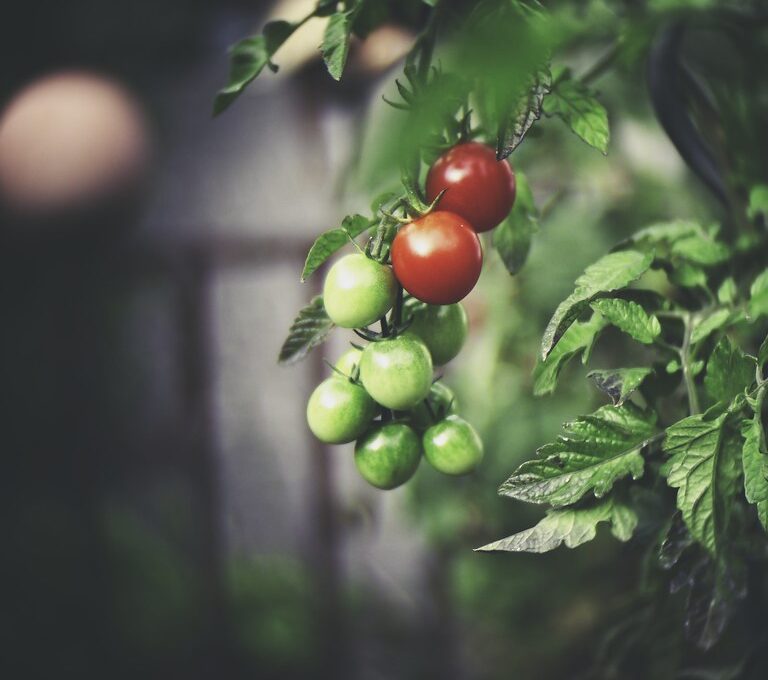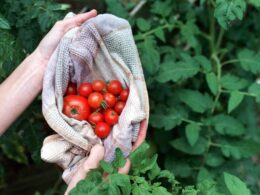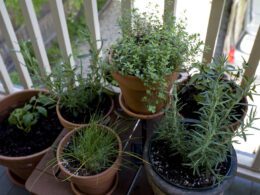You’re all set to enjoy a bountiful harvest of ripe, juicy tomatoes from your carefully tended garden. But wait – are those yellow leaves and stunted growth signs that something’s amiss? Over-fertilizing your tomato plants can happen more easily than you think, and it’s crucial to recognize the signs before it’s too late.
Don’t worry; we’ve got your back with this guide on how to spot over-fertilization and rescue your precious tomato plants.
In this article, we’ll walk you through the telltale signs of over-fertilized tomatoes, understand what causes it, and provide solutions to fix the issue. We’ll also share tips on preventing over-fertilization in the future and explore alternative plant care techniques for healthier tomatoes.
So roll up your sleeves and let’s dive into ensuring your tomato plants stay safe, happy, and fruitful!
Recognizing the Signs of Over-Fertilization
Let’s dive into identifying the tell-tale signs that you’ve given your tomato plants a bit too much TLC in the fertilizer department. Over-fertilization is a common issue among gardeners, and it can lead to some pretty gnarly problems for your precious plants. But fear not! By keeping an eye out for these symptoms, you’ll be able to spot trouble before it gets out of hand.
First things first, take a good look at your tomato plant’s leaves. If they’re turning yellow or developing brown spots on their edges, this could be an indication that there’s too much fertilizer in their soil.
Additionally, if your plant seems to have stopped growing altogether or if its leaves are curling up, it might also be struggling with over-fertilization. Be extra cautious when watering and feeding your plants – it’s always better to err on the side of caution than risk harming them further.
Another sign that you may have gone overboard with fertilizing is an abundance of foliage but fewer fruits. This happens because excessive nutrients cause the plant to focus more on leaf production instead of fruiting.
To fix this issue and restore balance to your tomatoes’ growth, reduce the amount of fertilizer you use and give them time to recover from their nutrient overload. Remember, patience is key when it comes to gardening – don’t stress if things don’t go perfectly right away; just learn from any mistakes made along the way and keep nurturing those lovely tomato plants!
Understanding the Causes of Over-Fertilization
Let’s dive into understanding the causes of over-fertilization. We’ll focus on the types of fertilizers and common application mistakes. You’ll learn how to choose the right fertilizer for your tomatoes and avoid errors that can harm your plants. With this knowledge, you’ll be well-equipped to prevent over-fertilization and maintain a healthy tomato garden.
Types of Fertilizers
There’s a wide array of fertilizers available, so it’s essential to understand their differences before applying them to your tomato plants. You’ll find two main categories of fertilizers: organic and inorganic.
Organic fertilizers come from natural sources like compost, manure, or bone meal, while inorganic fertilizers are synthetically produced, containing specific nutrients such as nitrogen (N), phosphorus (P), and potassium (K).
To keep your plants safe and thriving, you need to choose the right type and amount of fertilizer for your tomatoes’ needs. When selecting a fertilizer for your tomatoes, pay attention to the N-P-K ratio on the label. This indicates how much nitrogen, phosphorus, and potassium are present in the product.
Tomato plants generally need a balanced fertilizer with equal amounts of these three nutrients. However, be cautious not to overdo it; excessive amounts can lead to over-fertilization issues like poor fruit development or plant burn.
It’s also essential to follow the recommended application rates provided on the packaging – this way; you ensure your plants receive optimal nutrition without risking their safety and health.
Application Mistakes
Avoiding common fertilizer application mistakes can save your tomato plants from a world of trouble! One major mistake is applying too much fertilizer, which can lead to over-fertilization. To prevent this, always follow the recommended rates on the product label and be cautious not to exceed them.
Additionally, it’s essential to water your plants properly after fertilizing – a deep soak ensures that the nutrients are evenly distributed throughout the soil, helping your tomato plants grow strong and healthy.
Another common mistake is applying fertilizer at the wrong time. For instance, adding it too early in the season could cause excessive leaf growth instead of fruit production. On the other hand, fertilizing too late might not give your tomatoes enough time to absorb all those valuable nutrients before they wither away.
To avoid these issues, make sure you apply fertilizers during the appropriate stage of plant growth – generally when you see flowers starting to form or when fruits begin to develop. By keeping an eye out for these signs and taking action accordingly, you’ll create a safe and thriving environment for your tomato plants!
How to Fix Over-Fertilized Tomato Plants
Fear not, there are ways to remedy those over-fertilized tomato plants and save your precious crop! Over-fertilization can lead to an array of problems like reduced fruit production, weak plants, and a higher susceptibility to diseases. But don’t worry, with just a few simple steps, you can bring your tomato plants back to life and ensure a healthy harvest:
-
Water generously: Flush the soil around your plants with plenty of water to help dilute the excess fertilizer.
-
Remove damaged foliage: Prune away any yellowing or burnt leaves as this will allow the plant’s energy to be focused on new growth.
-
Add organic matter: Mix compost or aged manure into the soil to improve its structure and help balance out nutrient levels.
-
Monitor growth: Keep an eye on your tomato plants for signs of improvement or further distress, adjusting care as needed.
-
Avoid additional fertilizers: Hold off on applying more fertilizer until you see clear signs that your plants have recovered.
It’s important to act quickly when you realize your tomato plants have been over-fertilized. By following these steps and giving them some extra attention, you’ll soon see improvements in their overall health.
Remember, patience is key – it may take some time for your tomatoes to fully recover from over-fertilization.
So keep up with these remedies, stay attentive to your tomato plant’s needs, and before long they will bounce back stronger than ever. After all, ensuring the safety of our beloved crops is what every gardener strives for. And once they’re back on track, you’ll be able to enjoy a bountiful harvest from those resilient tomato plants!
Will Leaving Tomatoes on the Vine Too Long Affect their Quality?
Leaving tomatoes on the vine too long can indeed affect their quality. Overripe tomatoes tend to become mushy, lose flavor, and may develop mold or pests. To ensure optimal taste, texture, and freshness, it is recommended to harvest tomatoes when they are ripe and ready, rather than letting them stay on the vine for too long.
Preventing Over-Fertilization in the Future
To avoid over-fertilizing your tomato plants in the future, it’s important to focus on three key aspects:
- Proper fertilizer selection
- Application timing
- Frequency
By choosing the right type of fertilizer and applying it at appropriate intervals, you’ll ensure that your plants receive just the nutrients they need without overwhelming them.
Keep reading for clear explanations and helpful tips on how to prevent over-fertilization issues with your tomatoes.
Proper Fertilizer Selection
Now, let’s dive into choosing the right fertilizer to keep those tomato plants thriving and prevent any mishaps! Picking the proper fertilizer is essential for maintaining a healthy balance of nutrients in your garden.
When selecting a fertilizer for your tomatoes, look for one with a balanced N-P-K ratio (nitrogen, phosphorus, potassium). A good rule of thumb is to choose a ratio close to 1-2-3 or 5-10-10. These ratios help promote sturdy stems, robust roots, and abundant fruit production without causing over-fertilization issues.
Additionally, consider using an organic slow-release fertilizer. These types of fertilizers break down gradually over time, providing your tomato plants with a steady supply of nutrients throughout their growing season. This prevents nutrient spikes that can lead to over-fertilization problems while also keeping your mind at ease knowing you’re making an eco-friendly choice.
Remember: when it comes to fertilizing tomatoes, less is often more – so don’t go overboard! With the proper care and attention to detail in selecting the right fertilizer, you’ll be well on your way toward harvesting juicy and delicious tomatoes all summer long!
Application Timing and Frequency
Imagine the satisfaction of plucking perfectly ripe tomatoes from your garden because you’ve nailed the timing and frequency of fertilizer application! Knowing when and how often to apply fertilizer is essential for healthy tomato plants and a bountiful harvest.
To ensure you’re providing just the right amount of nutrients for your tomato plants, follow these simple guidelines:
-
Start with a balanced fertilizer when transplanting seedlings into the garden, usually around 2 weeks before the last expected frost date. This initial application helps establish strong roots and promotes overall plant health. Be sure to mix in some slow-release granular fertilizer or compost into the soil as well.
-
Once blossoms appear on your tomato plants, switch to a low-nitrogen, high-phosphorus formula. Phosphorus encourages fruit production and development while limiting excessive foliage growth. Apply this type of fertilizer every 4-6 weeks during the growing season.
-
Always water thoroughly after applying any fertilizer to help distribute nutrients evenly and avoid burning delicate root systems.
By following these steps in timing and frequency of fertilization applications, you’ll create an environment where your tomato plants can thrive safely. As a result, you’ll enjoy delicious homegrown tomatoes that are both nutritious and free from harmful chemicals.
Alternative Tomato Plant Care Techniques
As you continue to care for your tomato plants, consider trying alternative techniques like pruning and training or focusing on pest and disease management. These methods can help improve plant health and yield without relying too heavily on fertilizers.
Explore these options to find the best approach for your specific gardening needs.
Pruning and Training
It’s time to focus on pruning and training those tomato plants for optimal growth and production! Proper pruning and training not only help your plants grow stronger, but they also ensure a bountiful harvest. By removing excess leaves and stems, you’re allowing the plant to focus its energy on producing fruit rather than foliage.
Additionally, by training the plant to grow vertically or in a specific direction, you’re making it easier to manage pests and diseases.
To make your tomato plants healthy and safe, keep these key points in mind:
-
Consistency: Make sure to prune regularly throughout the growing season. This ensures that your plants will have a strong structure that can support their fruit.
-
Clean tools: Always use clean, sharp tools when pruning to avoid introducing any potential diseases or infections.
-
Gentle touch: Be gentle when handling your tomato plants during both the pruning and training process. Rough handling can cause unnecessary stress or even damage.
By following these tips, you’ll be able to create an environment where your tomatoes thrive while also providing yourself with peace of mind knowing they are protected from common issues.
Happy gardening!
Pest and Disease Management
Now that you’ve got pruning and training under control, let’s tackle pest and disease management to keep those tomatoes flourishing without any unwelcome surprises.
First, get familiar with the common pests and diseases that can affect your tomato plants, such as aphids, hornworms, or blight. Keeping a close eye on your plants is essential; inspect them regularly for any signs of damage or distress. If you spot an issue early on, it’s much easier to address it before it becomes a bigger problem.
To prevent pests from feasting on your precious tomatoes, consider using natural deterrents like companion planting with marigolds or basil – these plants are known to repel certain insects.
For diseases, proper spacing between plants is crucial; this allows for good air circulation and minimizes the risk of spreading infections. You can also use organic fungicides if you notice any fungal issues popping up.
Remember: keeping a clean garden environment by removing dead leaves and debris will go a long way in preventing both pests and diseases from taking over your tomato haven!
Conclusion
So, you’ve learned how to recognize over-fertilized tomatoes and understand the causes. Don’t worry – with these tips, you can fix your plants and prevent it from happening again.
Keep exploring alternative care techniques for a healthier tomato crop. Happy gardening!









